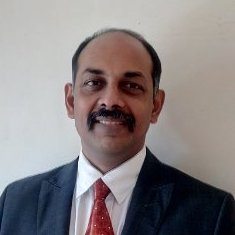Gopal Govindharajan, Senior Sales Engineer – India OEM, Dell EMC speaks with Shanosh Kumar from EFY about latest disruptions in blockchain, natural language processing, artificial intelligence and other interesting technology trends in Internet of Things (IoT) space which is no longer in its infancy.

Q. Could you share your outlook on how computing has evolved, with the influence of the IoT?
A. Before the client server architecture evolved, the centralised Unix architecture was the best and most promising technology at that point of time. With advancements in technology, there has been a paradigm shift in the way computing was done and this paved the way for two and three tier architecture. There is also a possibility that this might undergo another massive transformation within a decade.
Q. What growth factors led to development of IoT?
A. Prominent factors facilitating this change could be the chaotic and unprecedented growth of devices, data, lack of a uniform platform for seamless interoperability etc. With the connected enterprise becoming a reality, the IoT devices normally understood to share information, connect to a network like that of Sensors, have also started real time computing on the fly. Edge analytics has become a standard package of any intelligent gateway. Some gateways also work on the store and forward model, depending on the use case. This means that the gateway needs to have some storage space as well.
Q. What are the important objectives that connected devices are programmed to perform?
A. Consumer IoT may not require speeds and feeds of an enterprise device, but will still need to control, sense, process, connect and transmit data. Architecting a computer platform for an IoT device needs lots of detailing for the intended use case to which it will be subjected to. Devices that will transact more data, respond faster, interface with many platforms may require more processing power and that comes at a price of more silicon and lots of cooling.
Q. How stable is the current centralised model for the Internet of Things (IoT)?
A. The centralised model of data structuring or information convergence is based on the client server paradigm. This model of brokered communication is perfect owing to two factors; the existing level of devices and the large volume of information exchange in any network. Since solutions turn more complex when billions of connected devices transact and store several petabytes of data, this technology may transform into a sustainable model to withstand high levels of touch points and SLAs (Service Level Agreements).
Q. What are currently the most disruptive technologies related to the IoT space?
A. Blockchain is still at a nascent stage in terms of adoption for businesses. Despite numerous positive effects of this technology, there are a few downsides that make many enterprises cautious of this adoption. However, Blockchain is still touted to be the most disruptive technology in the near future. The banking industry is amongst the early adopters of blockchain technology due to the security and ease of operations offered. When the M2M (Machine To Machine) and HMI (Human Machine Interface) communications increase, the real potential of this technology will be very evident. There has also been increased traction due to the potential to transform key parts of our economy through new fraud-proof, crowd-sourced, and open trusted mechanisms. Financial institutions will break away from other industries as they welcome blockchains into their systems.
Q. What is the hottest technology that you see for 2017?
A. We believe that 2017 will see an increase in AI (Artificial Intelligence) being used to mine the data coming from IoT devices. AI has already been making a mark through aiding real-time decision-making. In AI’s future, developing more natural language capabilities will help to further realise the potential of a connected IoT world, as natural language-based data descriptions will provide a universal way to understand data among various types of devices. According to Forrester, there will be a greater than 300% increase in investment in artificial intelligence in 2017 compared with 2016. As IoT gets distributed across the edge and cloud, insights will be boosted by the use of AI and containers. This approach will not only break down the data silos among IoT types, but can also be expanded to allow humans to communicate with the IoT directly through voice or text.
Q. Do you foresee AI having an immediate effect on the way things are currently done in engineering?
A. According to a recent study (Future Workforce Study), thirty-four per cent of Indian workers said their biggest concern about AI was that they’d become too reliant on AI to perform day-to-day tasks. Some companies are using the opportunity to retrain employees and teach them new skill sets. For example, data scientists will start training machines to go beyond reviewing large data pools for insights and answers – helping machines develop the knowledge to read between the layers. Through the ability to communicate via spoken languages, AI will be able to interpret data differently, as it will be able to break it down more succinctly, identify and share nuances that wouldn’t otherwise be seen within a large swathe of information.
Q. What would be one technology related to IoT that has the power to strongly touch the personal lives of consumers?
A. In about five to ten years we can expect to witness the emergence of commercially available embedded clothes, pendants and other wearables that measure the body vitals non-invasively and transmit the details to the remote doctor at regular intervals for diagnosis. Remote healthcare services will soon become a multimillion-dollar service offering by connecting specialists from across continents to patients on the other side.






